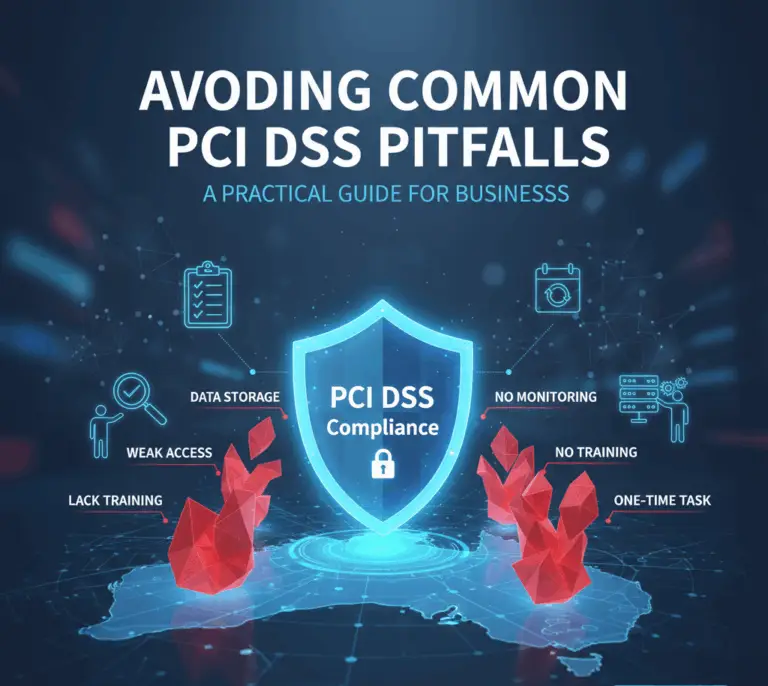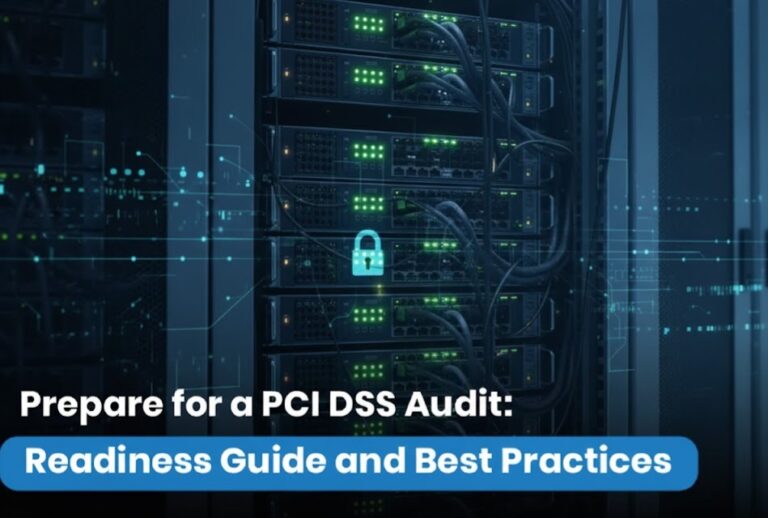Tailored PCI DSS Strategies by Business Size and Sector
Now, let’s drill down into specific considerations and tips for different audiences: small businesses, medium-sized businesses, large enterprises, the financial industry, and IT professionals tasked with compliance. While the core PCI requirements remain the same, the approach to achieving them can differ based on your organization’s size, industry, and resources.
Small Businesses: Achieving PCI DSS Compliance with Limited Resources
Small businesses (such as independent retailers, small e-commerce sites, or startups) often fall under merchant Level 3 or 4, meaning they process relatively few transactions per year. PCI DSS does apply to them — any business that accepts card payments must comply, regardless of size 11. The good news is that for Level 4 merchants, the validation requirements are lighter (often just an annual Self-Assessment Questionnaire and periodic scans, rather than on-site audits). However, limited IT budgets and expertise can make the path to compliance seem daunting. Here’s how small businesses can achieve PCI compliance more easily:
- Use Outsourced and Simplified Payment Solutions: The single biggest step a small business can take is to outsource as much of the payment processing as possible to PCI-compliant third parties 11. For example, use payment service providers like Square, Stripe, or PayPal, or your bank’s card processing service, so that you never directly handle the full card data. Many modern payment providers offer hosted checkout pages or embedded iframes for online payments – this means the card info goes straight to them and never touches your servers (keeping you out of scope for many requirements). For in-person payments, use terminals that are P2PE certified, so card data is encrypted at swipe/tap and no plaintext card number ever stays in your environment. By leveraging these services, your PCI scope might be reduced to just making sure you protect the device or the web redirect, significantly simplifying compliance.
- Focus on the PCI Basics (SAQ A or B): Small merchants typically use one of the simpler SAQs (like SAQ A for those fully outsourcing e-commerce, or SAQ B for standalone terminals). These still require basic security hygiene: use a firewall on your office network, have antivirus on any PC that might handle payments, and never store electronic card data locally 11. Often, for a truly small merchant, compliance might boil down to maintaining updated software on a single point-of-sale system, securing your Wi-Fi, and ensuring employees know not to write down card numbers. By focusing on the subset of requirements relevant to your business type, you can tackle compliance step by step instead of feeling overwhelmed by all 12 requirements.
- Cost-Effective Tools and Services: There are affordable or even free resources geared toward helping small businesses with compliance. For instance, your payment processor or bank might offer free compliance training or tools – some provide a portal to fill out SAQs or scan your website for vulnerabilities. Use these! Also consider low-cost security improvements that give a big bang for the buck: e.g., enable free TLS encryption on your website (e.g., via Let’s Encrypt), use free anti-malware programs, and use built-in OS firewalls. Implementing strong passwords and changing defaults costs nothing but time and is a requirement you can easily meet. If budget allows, using a managed security service provider to monitor your network or handle PCI tasks can be worthwhile, as it offloads work you might not have time for. Remember, compliance is an investment – as one expert put it, the cost is simply part of doing business if you want to accept cards, and it’s undoubtedly worth it 1 when you consider the financial and reputational damage a breach could cause a small business.
- Common Small Business Pitfalls to Avoid: Be aware of a few traps that small businesses sometimes fall into:
- Thinking “I’m too small to be targeted”: In reality, smaller firms are frequently targeted by hackers precisely because they often have weaker security. In fact, over half of payment card breaches involve small or medium businesses 7. Don’t assume compliance isn’t crucial for you.
- Unknowingly storing card data: Sometimes a checkbox in your point-of-sale software might save card numbers for convenience – make sure this is disabled if you don’t absolutely need it. Storing card data automatically makes compliance much harder (and risks more if breached).
- Ignoring updates: Small businesses might not have IT staff constantly applying patches. Schedule a regular update (even monthly) for your systems or use auto-update features so you don’t fall behind on security patches.
- Incomplete self-assessment: When filling out an SAQ, answer honestly. It’s tempting to rush through it, but the exercise is meant to highlight what you should fix. If you’re unsure about a question, reach out to your processor or an IT consultant rather than guessing.
By leveraging outside help for payments, sticking diligently to security basics, and avoiding common mistakes, small businesses can achieve PCI compliance with relatively low effort and cost 11. Many have done it successfully – it’s about working smarter, not harder, and using the resources available (from payment vendors and the PCI Council) to guide you.
Medium-Sized Businesses: Scaling Compliance as You Grow
Medium-sized businesses (say, regional chains, mid-market companies, or online businesses processing in the mid-to-high six figures of transactions annually) face a middle ground of challenges: more data and complexity than a mom-and-pop shop, but often without the full-scale dedicated compliance departments of large enterprises. They might fall under PCI merchant Level 2 or 3 depending on volume – which can mean an annual SAQ or an onsite assessment, and definitely regular network scans. For these businesses, scalability and formalization become the focus:
- Build an Internal Compliance Capability: As your business grows, it’s wise to designate a person or team responsible for PCI compliance (often within IT or security). Medium businesses should start establishing an internal process for compliance management, if not a full-time role, at least a point-of-contact. This role can coordinate between IT, finance, and management to ensure all PCI requirements are being addressed. It’s also beneficial to create a compliance calendar – e.g., Q1: do annual SAQ or audit prep, monthly: review user accounts, quarterly: schedule ASV scans, etc. Having a plan in place prevents last-minute scrambles.
- Consider a Gap Assessment or External Audit Prep: Many medium enterprises engage a Qualified Security Assessor or consultant even if not strictly required to (Level 2 can sometimes do SAQ rather than QSA audit). Bringing in an expert to perform a gap analysis can be extremely helpful 10. They will measure your current state against PCI requirements and highlight where you fall short. This lets you fix issues on your own time before an official assessment. It’s a proactive expense that can save you from failing an audit or suffering a breach later. Additionally, if you anticipate crossing the threshold to Level 1 soon (e.g., your transaction volume is growing), preparing for a QSA assessment early will make the transition smoother.
- Invest in Scalable Security Infrastructure: Medium businesses often operate in a mix of on-premises and cloud, multiple offices, etc. It’s important to implement scalable solutions for key PCI controls. For instance, as user counts grow, have a centralized identity and access management system (with MFA) so adding users with appropriate roles is streamlined. Implement network segmentation early – separate your corporate IT network from any network segment that handles payment processing (e.g., your e-commerce servers) using VLANs or cloud VPC separation. Deploying a robust logging/monitoring system (perhaps a cloud SIEM or a managed detection service) will pay dividends as your IT footprint grows. Essentially, set up security tools that can grow with you: it’s easier to justify and integrate them at mid-size than to bolt them on as an afterthought when you become large.
- Address Challenges Unique to Mid-Size Operations: Some issues that medium businesses often encounter include:
- Multiple Data Channels: You might have more complex payment flows – e.g., an online store, maybe a call center taking orders, and retail locations. Ensuring all those channels are secured and compliant (and fully documented in your scope) can be tricky. Work closely with each business unit to implement standard practices across the board (for example, consistent policies for handling phone orders, unified tokenization service for both online and in-store data).
- Third-Party Integrations: Mid-size companies often use a lot of SaaS and third-party platforms. Make a list of all the services that touch payment info (web hosts, payment gateways, CRM systems where card data might be entered) and verify their PCI compliance. Get attestations of compliance (AOC) from those providers. Medium businesses should formalize vendor management: include PCI responsibility clauses in contracts and periodically ask for compliance proof 5.
- Budgeting for Compliance: You may need to convince upper management to allocate budget for compliance efforts (tools, staff time, external audits). This is where metrics help – highlight the risks of non-compliance and possibly reference industry statistics of breaches. Making the case that compliance spending is an investment protecting revenue (and that clients/partners may demand proof of compliance) can help unlock funds.
- Leverage Peer Networks and Information Sharing: Medium businesses can benefit from the experiences of others. Participate in industry groups or forums focused on security/compliance. Sometimes, trade associations (especially in the financial or retail sectors) have user groups for PCI. Learning how similar-sized organizations handle requirements can provide practical tips and possibly vendor recommendations. The PCI SSC also has an Assessors and Participating Organization program – while that might be more for larger entities, even mid-sized companies can join as a Participating Organization to have a say in PCI discussions and get early info. At the very least, keep an eye on the PCI SSC blog and newsletters for updates 4, and train your IT staff through available courses so they stay current.
In essence, medium businesses should start treating PCI compliance as a structured program, not an ad-hoc task. By investing in proper planning, scalable security measures, and occasionally availing external expertise, you can ensure that growth in business doesn’t outpace your security controls. Many mid-sized firms find that after the first year of really focusing on PCI, subsequent years become easier because the processes are in place.
Large Enterprises: Managing Complex Environments and Audits
Large enterprises (such as big financial institutions, large retailers, or multinational companies) typically fall under merchant Level 1 – the highest level, which requires an annual on-site assessment by a QSA or internal security assessor, plus continuous compliance efforts. These organizations likely process huge volumes of card data and have many moving parts in their IT infrastructure. They also often have dedicated compliance and security teams. However, scale brings its own challenges. Here’s how large businesses can achieve and sustain PCI compliance:
- Establish a Formal PCI Compliance Program and Team: Large organizations should have a governance structure for PCI compliance. This might include a PCI compliance manager, a cross-functional committee (with representatives from IT security, IT operations, finance, business units, etc.), and clear executive sponsorship. Given the breadth of the environment, coordination is key. Define roles and responsibilities: for example, who oversees network controls, who manages the annual audit, who liaises with the QSA, who tracks remediation items, etc. Many large firms run PCI compliance as an ongoing project with a detailed project plan each year to prepare for assessments and address any changes. Having top management support is crucial – leadership should treat PCI compliance as mandatory (not optional) and provide the needed resources to the team.
- Scope Reduction and Segmentation at Scale: Scope creep is a big concern in large networks. Invest heavily in network segmentation and data isolation to keep the CDE as small and contained as possible 12. Large enterprises often use techniques like dedicated VLANs or cloud accounts for anything that touches card data, with strict firewall rules separating them from general corporate networks. They may implement end-to-end encryption so that even internal transmissions of card data are encrypted. Also, they use jump servers or controlled access gateways for administrators to enter the CDE, which helps enforce that universal MFA requirement and monitor admin activity closely. Some organizations establish a policy that no card data is allowed in certain networks at all – for instance, employees should never receive card details via email or chat, etc., and they use DLP (Data Loss Prevention) tools to enforce this. The goal is a clear boundary around card data systems. This not only simplifies compliance but also drastically reduces risk if another part of the network is compromised.
- Efficient Audit Management: For a Level 1 merchant, the annual PCI audit by a QSA is a major event. Preparation is everything. Maintain an up-to-date repository of compliance evidence – such as screenshots, config files, policy documents, and incident records – throughout the year. It helps to use compliance management tools or even just well-organized SharePoint/Confluence spaces where each of the 12 requirement areas has documentation ready for the assessor. Conduct an internal pre-audit (perhaps by an internal audit team or a different group within the security team) to catch any gaps. When the QSA arrives, ensure all key personnel are available and well-prepared to describe their controls. A trick large orgs use is to standardize as much as possible: if you have, say, 50 branch offices or thousands of point-of-sale registers, implement the same software and processes on all – then the QSA can sample a few and reasonably extrapolate compliance, rather than finding each location is different. This uniformity makes audits smoother.
- Address Legacy Systems and Complex Workflows: Big companies often have legacy mainframes or ancient applications that process payments (especially true in financial and telecom sectors). Bring legacy systems into compliance by proxy or compensating controls if needed. For example, if a legacy system can’t encrypt stored data, consider database encryption at the file system or disk level, or put that system on an isolated network segment with very limited access, and monitor it heavily. Document any compensating controls and get buy-in from the assessor early by explaining how you meet the intent of PCI requirements even if not exactly as written. PCI DSS does allow compensating controls when strict adherence isn’t feasible, but they must be reviewed and approved by the assessor. Also examine complex data flows; sometimes in large orgs, card data passes through many hops (e.g., from a call center to a processing system to a clearinghouse). Analyze each step and ensure each link is secured and documented.
- Continuous Compliance through Business-as-Usual (BAU) Processes: Large enterprises benefit from baking PCI compliance tasks into BAU. For example, integrate PCI checks into change management – any time a new system dealing with payments is introduced, a checklist ensures it meets PCI requirements. Set automated reminders for quarterly access reviews or firewall rule reviews mandated by PCI. Many companies tie PCI controls into their overall information security management systems (possibly aligning with ISO 27001 or other frameworks). By institutionalizing these tasks, compliance becomes second-nature rather than a yearly scramble. Some also employ dedicated PCI compliance tracking tools that dashboard the status of all requirements across departments.
- Industry Collaboration and Updates: Large businesses, especially in the financial industry, often interface directly with the PCI Security Standards Council or industry groups. They might participate in Special Interest Groups (SIGs) for new PCI guidance. Staying ahead of updates is important – for instance, knowing early about upcoming PCI DSS version changes or new guidance (like the updated TLS requirements a few years back, or new appendix for multi-factor auth) gives you more time to adapt. Big organizations can even influence the standard by providing feedback during RFC periods (as happened with v4.0.1 clarifications 5). Ensure someone on your team is tasked to monitor PCI SSC announcements, attend community meetings, and disseminate that info internally.
In summary, large enterprises should leverage their greater resources to over-engineer their PCI controls in a positive sense – aiming not just for minimum compliance but for robust security that ideally exceeds PCI requirements in places. This provides a cushion that makes passing audits straightforward and reduces risk of an incident. While the scale is challenging, large organizations also stand to gain the most from the trust that comes with demonstrable strong security (no one wants to be the next big breach headline).
Financial Industry Considerations
The financial industry (banks, credit unions, etc.) is unique in that it has a lot of regulatory overlap and typically more mature security programs. Banks may already comply with regulations like the Gramm-Leach-Bliley Act (GLBA) and undergo regular federal IT examinations. This can give them a head start on PCI DSS compliance: many controls like firewalls, access controls, and policies are likely well-established 12. However, there are a few key areas and challenges for financial institutions when it comes to PCI:
- Differences Beyond GLBA: Some PCI DSS requirements go beyond what banking regulations traditionally enforced. Encryption of stored cardholder data is one example highlighted for banks 12. Traditional bank audits might not have insisted that all internal databases encrypt account numbers, but PCI does require PAN (Primary Account Number) to be rendered unreadable when stored (with a few exceptions) 12. Financial institutions need to double-check that card data is encrypted at rest in their systems, not assuming other controls suffice. Another area is file integrity monitoring (FIM) – PCI explicitly calls for monitoring critical logs and system files for unauthorized changes 12. Banks should ensure they have FIM tools (or equivalent logging controls) to meet this, as it might not have been a focus in other audits.
- Network Segmentation in Complex Environments: Banks often have large, interconnected networks, and in some cases cardholder data might historically have been scattered (e.g., card numbers present in multiple systems across retail banking, lending, etc.). Implementing or enhancing network segmentation is crucial 12. For instance, isolating the credit card payment processing environment from the rest of the corporate network can drastically reduce PCI scope. Without segmentation, potentially the entire bank’s network could be in scope if card data is accessible widely – which would be a compliance nightmare and expensive to secure. Banks should identify all systems that store or process card data (perhaps credit card issuing systems, ATM networks, etc.) and cordon them off as much as possible to limit scope.
- Leverage Existing Security Strengths: Financial organizations can leverage their rigorous existing processes to help with PCI. For example, banks usually have strong change management and access control practices due to other regulations – these can be mapped to PCI requirements for documentation. Incident response plans in banks are often well-drilled; they might just need a tweak to ensure card brand notification steps (required by PCI) are included in breach scenarios. Since banks undergo regular audits (internal and external), staff may already be accustomed to compliance culture. Expanding that to include PCI specifics is often easier than starting from scratch at a tech company that never had audits.
- Key Focus Areas for Audit: From industry experience, PCI assessors examining a financial institution tend to focus on the areas where banking infosec and PCI might diverge. We mentioned encryption at rest and FIM. Another one is third-party service provider agreements – banks have lots of vendors and partners, so ensuring all those who handle card data have proper PCI clauses and attestations is important. Additionally, banks should watch out for any unnecessary card data retention. PCI and other regs often align on data minimization, but it’s easy for a bank to accumulate years of transaction logs, for instance. Ensuring that card numbers in logs or data warehouses are masked or truncated after a time can keep you compliant and reduce risk.
- PCI DSS for ATMs and Branches: If we consider financial industry specifics – ATMs that accept card payments (for deposits/withdrawals) are in scope for PCI (they read card data). Ensuring ATMs and point-of-sale in branches follow PCI requirements can be tricky, especially since they are widespread physical devices. Encryption between the ATM/POS and the bank’s network is essential (most use secure VPNs or leased lines). There are also PCI requirements for physical inspections to prevent skimmers. Banks likely already do those, but documenting them for PCI is needed. Branch servers or workstations that handle account opening might inadvertently handle cards – those should be hardened similar to other in-scope systems or segmented.
Overall, the financial sector likely finds PCI DSS to reinforce many of the controls they already consider best practices. The biggest challenge is often one of scope – identifying pockets of card data and ensuring they meet PCI’s specific controls. With a structured approach, banks and financial firms can integrate PCI compliance into their existing compliance regime relatively smoothly. In fact, demonstrating PCI compliance can be a business advantage for banks (e.g., when offering merchant services, being able to show you meet the same standards).



